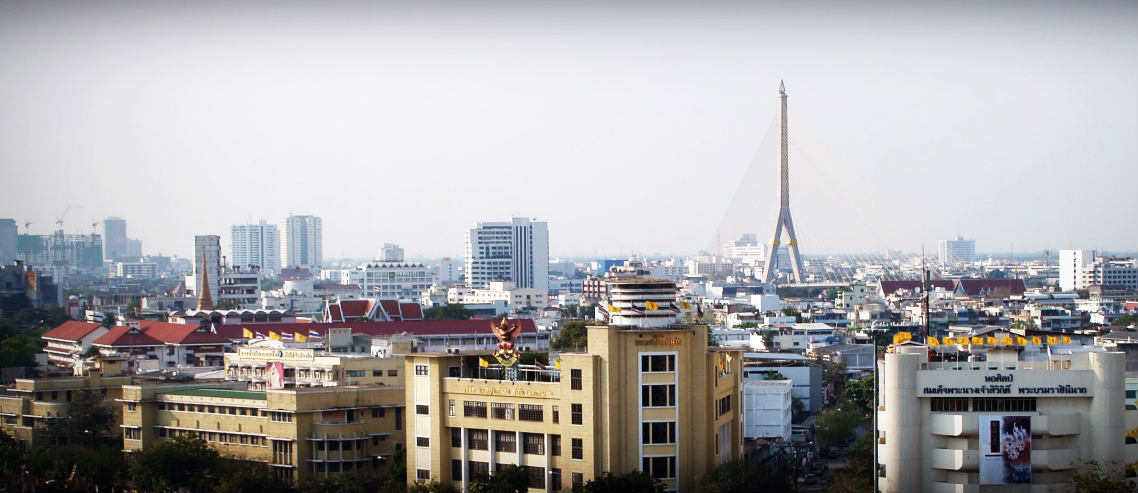Pacific Prime releases new international private medical insurance inflation report
The 2018 version of Pacific Prime’s insurance inflation report has been released, and Thailand again features prominently as an area of focus in the Southeast Asia region. The International Private Medical Insurance Inflation – 2018 report is the fifth major installment of this industry-recognized white paper. It outlines the rate of premium inflation applied to international insurance plans across the world, highlighting the key drivers of influence, and how locations where such plans are popular are impacted.
Best of all, you can download this report free from our global site. Click here to visit our report download page, or read on to learn more about the new Pacific Prime release.
Key figures from the International Private Medical Insurance Inflation – 2018 report
For 2017, the new report has found that the global percentage increase of international private medical insurance premiums was 7.0%. The report itself tracks the rate of inflation across the years 2009 to 2017, and found that this year has reached a record low (2009, for example, had an average global inflation rate of 12.8%).
The report itself also looks at inflation rates by global insurer. Pacific Prime works with many of the top global brands providing international coverage, and it’s the premium data from the likes of Aetna, Allianz, Bupa, and Cigna that have made our figures and analysis possible. In particular, you’ll find out the specific premium inflation rates for each insurer for all of our focus locations. You will also see how they compare overall in the international insurance market – this year, Cigna Global had the lowest overall average premium increase worldwide.
In terms of countries, Dubai saw the highest average inflation rate with 9.6% for 2017. Indonesia, on the other hand, had the lowest premium inflation (5.3%).
What’s driving international insurance premium inflation this year?
An important aspect of the International Private Medical Insurance Inflation – 2018 report is the analysis regarding the main influences impacting premium costs. For the past five years, many of the key drivers have remained constant; new medical technology, an imbalance of healthcare resources, increased professional compensation, and overutilization of health services.
The report also identifies, and discusses emerging trends in the insurance industry that look set to have an impact on premium costs in the future. This year, the emerging trends to watch are:
- Increased compliance and regulations: Including new Risk-Based Capital regulations being introduced around the world. These impact the capital requirements of insurers, as well as putting increased pressure on their compliance costs.
- Better economic conditions: Improved financial outlooks for many countries means both consumers have had increasing levels of discretionary income to spend, and insurers have been better able use more calm markets to rein in spending while improving business practices.
The report discusses each of these continuing, and emerging trends in more detail. In addition to taking a global view of the influences on premium prices, it also provides an analysis of country-specific drivers as a way of providing a full understanding of the inflation rate changes.
International private medical insurance inflation in Thailand
For 2017, Thailand’s inflation rate has held close to the global average. Its rate of 7.4% for the year represents the third lowest inflation increase the country has had in the past eight years, and a continued flattening of the total inflation movement since 2013. In relation to the 0.6% Consumer Price Inflation rate, Thailand’s international insurance premium inflation figure sits well above it.
Compared to the other countries included in the report, Thailand sits fourth-equal with the Philippines. Both are joint highest for inflation rates in the Southeast Asia region, with only Hong Kong being above them. Indonesia, the third Southeast Asian nation that the previous reports have generally included with Thailand and the Philippines as “low cost” countries, sits alone at the bottom of our rankings with an average inflation rate of 5.3%.
Key drivers impacting insurance premium inflation in Thailand
Thailand’s own local factors remain long-standing influences of healthcare resource imbalances, service overuse, and a slow tech sector holding back medical innovations. As with the year before, the Thai economy has continued to struggle in 2017, however the ruling military junta has announced a number of projects aimed at improving infrastructure.
Download your free copy of the 2018 report
When it comes to understanding the state of international health insurance, and the direction it’s heading, it always pays to listen to an expert you can trust.
Our consultants and advisors at Pacific Prime Thailand helped produce the International Private Medical Insurance Inflation – 2018 report that you can download free today. From providing insurance premium data, to offering insightful analysis of the local market, our global parent company, Pacific Prime, has again published a report that will serve both consumers and industry players alike.
To get a copy of the report, visit our download page here, or contact the team at Pacific Prime Thailand to have one emailed to you directly.
- Injury insurance for Muay Thai training in Thailand - November 4, 2022
- Health insurance brokers vs agents vs health insurers in Thailand - March 19, 2021
- New infographic on international insurance inflation around the world - May 28, 2018





Comments
Comments for this post are closed.
We'll notify you
when our team replies!